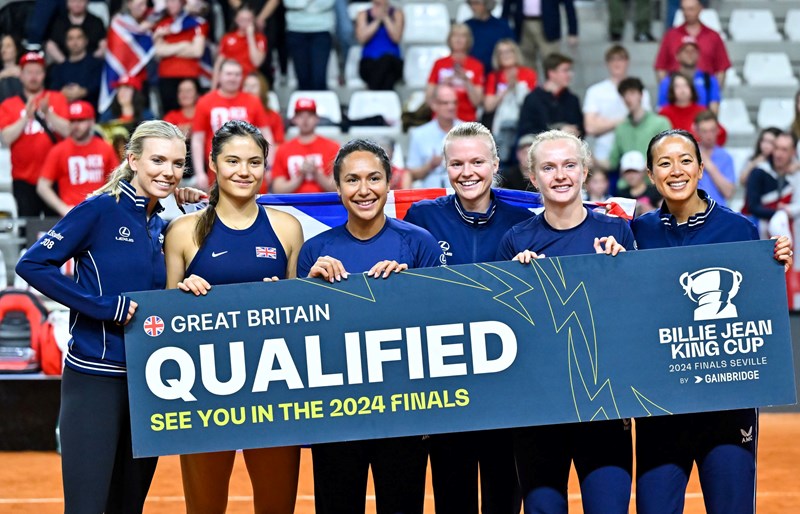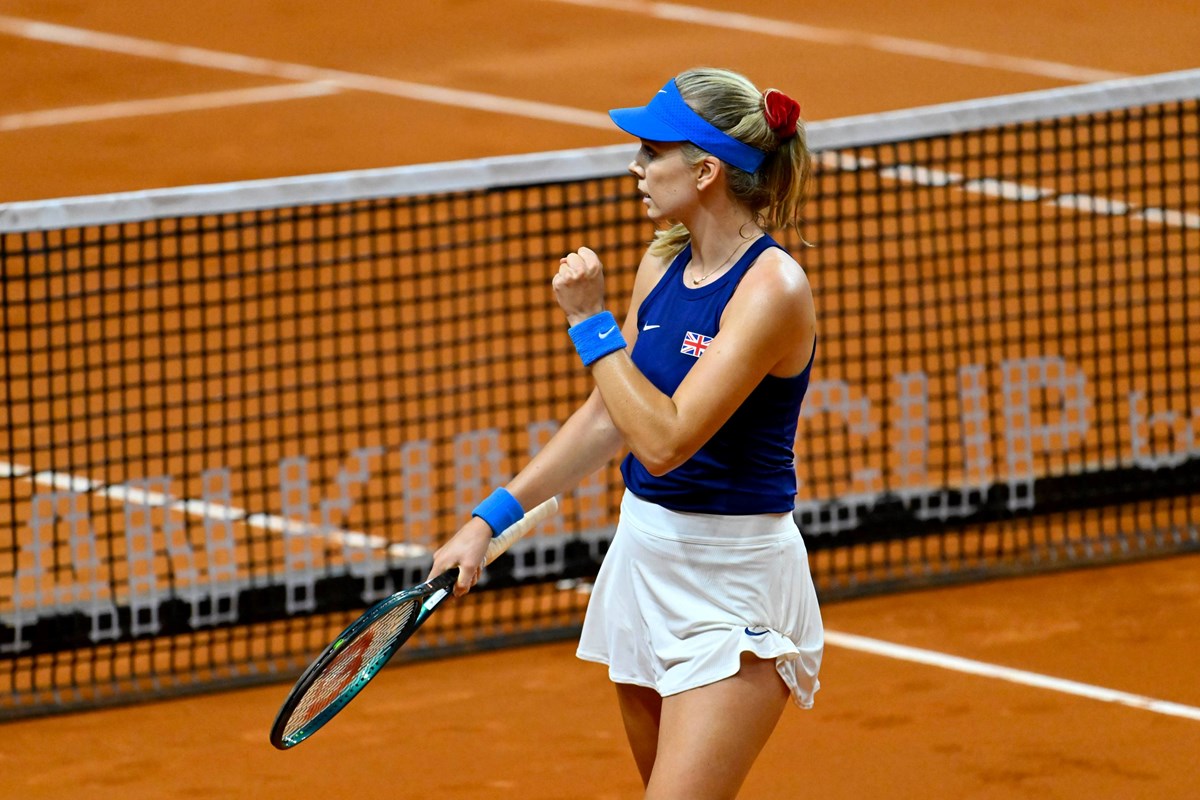How the Brits beat the clay – analysing GB's Billie Jean King Cup victory over France

Almost two weeks have past since Great Britain caused an upset over France at the Billie Jean King Cup Qualifiers in Le Portel, France.
Despite coming into the tie as the underdogs, the Lexus GB Billie Jean King Cup team, led by British No.1 Katie Boulter and 2021 US Open champion Emma Raducanu, rose to the occasion to defeat Diane Parry, Caroline Garcia and Clara Burel in a 3-1 victory.
With the clay typically being considered unfamiliar territory for the Brits, just what approach did they take to their clay court clash that saw them secure their spot in the 2024 Billie Jean King Cup Finals in Seville?
We sat down with LTA Performance Analyst, Toby West who broke down exactly how the Brits prepared for their battle against France.
Taking advantage of the slower court surface to lengthen rallies

Clay is a slower surface than the grass and hard courts, which gives players an opportunity to lengthen their rallies. This can be a great tactic against opposition who traditionally like to keep the points short or play more aggressively.
If a player is used to hitting aggressively in their first few shots and are hitting winners early in the points, they can be pressurised into making mistakes by extending the rallies due to the natural nature of a clay court being slower and having more time to react to the ball and get back into position.
An example from the Billie Jean King Cup Qualifier is Caroline Garcia - a very aggressive player who likes to play first strike tennis by hitting a big serve and big third ball in the rally.
If you look at the numbers from both of Raducanu’s matches and Boulter’s contest against Clara Burel, the Brits won 55% of the points that were four shots or more.
Creating space and attacking the open court
With the ball sitting up a little bit more on the clay, some players like to run around their backhand to hit a more attacking shot on the forehand. However, in doing so, it leaves a lot of open space on the rest of the court.
On clay, players often aim to hit deep and heavy into the backhand side to apply some pressure, which can trigger a weaker return from the opponent – giving players a chance to attack the open space.
A fantastic example from the qualifying weekend is when Raducanu effectively put pressure on Parry’s backhand and then attacked the space on her forehand side – forcing a number of errors from Parry’s forehand wing.
However, for this approach to be successful, you’ve got to be really accurate in hitting it deep, keeping the pressure on and making smart decisions about how you play into the space when you receive a short or weak ball – which is what we saw from her in that fourth match.
Optimising the drop shot against deep returners

Certain players like to hold a deep and defensive return position on the court to give them more time to react and get to a lot of shots.
Some of these players are very skilled at moving on the clay, sliding from side to side and sprinting across the court to get to the next shot, but one effective play we often see is a shot back in behind to compromise the opponent's footwork.
On a clay court, it’s more difficult to plant your feet and move effectively like you can on a hard court because you’ve not got as much grip and you’re going to slide when you try and change direction.
For some of the deeper-returners, players often opt for a drop shot. This is effective because not only are they standing deep and therefore have further to run to the ball, but the initial movement off the mark to chase down the drop shot is going to be a little slower because of the lack of grip and because the clay kills the bounce slightly more and quicker than on a hard surface.
The drop shot was an efficient shot for both Brits players competing against France. Boulter hit six drop shots in her second match against Burel and won all six points, while Raducanu won 63% of the dropshots she played against Parry in the winning rubber.
However it’s important to pick the right moments to use this shot, as some players can begin to read the patterns and will become better prepared to chase down the ball.
